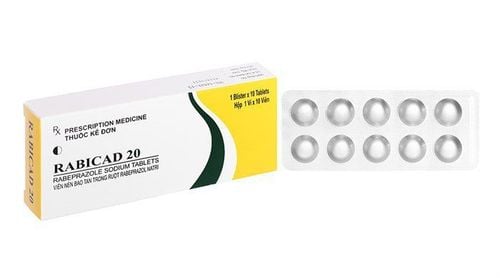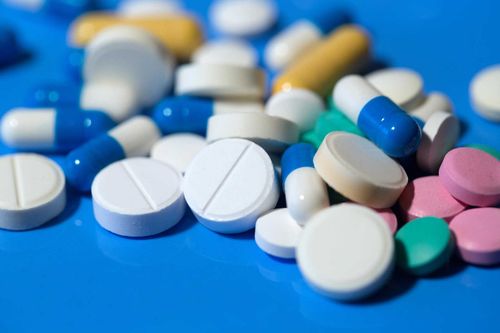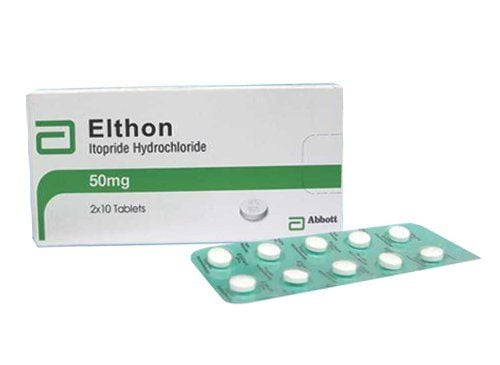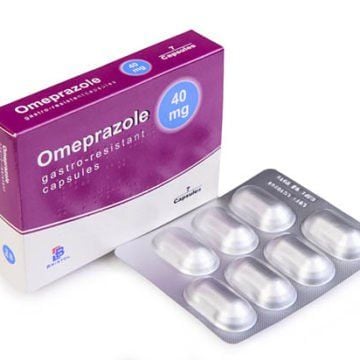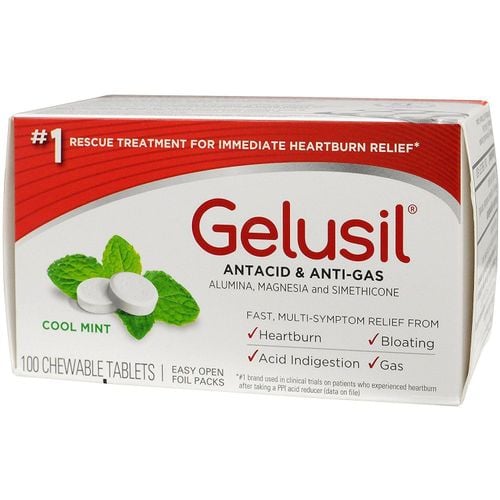This is an automatically translated article.
Zeprilnas is a drug used in the treatment of diseases of the gastrointestinal tract. The drug has the main ingredient is Itoprid hydrochloride 50mg and excipients are sufficient. To ensure effective use and avoid side effects, users need to strictly follow the instructions of the doctor, professional pharmacist.
1. What are the effects of Zeprilnas?
What does Zeprilnas do? Itopride hydrochloride increases gastrointestinal motility with a dual action: increasing the release of acetylcholine by antagonizing dopamine D2 receptors and inhibiting the breakdown of acetylcholine released through inhibition of the enzyme acetylcholine esterase .According to research, Itopride hydrochloride increases gastric motility in awake dogs (dose dependent).
Itopride hydrochloride suppresses vomiting in dogs induced by apomorphine (this effect is dose dependent).
Itopride pharmacokinetics
Itopride serum concentrations following a single dose of 50 mg of itopride hydrochloride in the fasted state and pharmacokinetic parameters in healthy adults are shown in the following table:
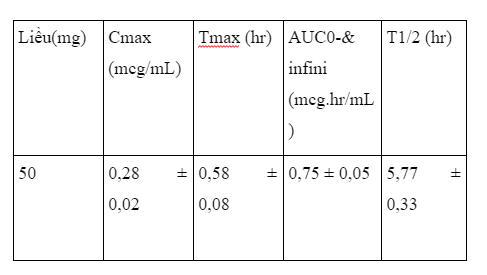
Distribution:
Based on animal experiments, the following results were obtained:
Maximum concentrations were reached in almost all tissues 1 - 2 hours after a single oral dose of 5 mg/kg 14C-itopride hydrochloride in rats. 2 hours after taking the drug, it reaches high concentrations in the kidneys, small intestine, liver, adrenal glands, stomach according to the decreasing level and the proportion of drug entering the central nervous system such as brain and spinal cord is very small. When 14C-itopride hydrochloride was administered at a dose of 5 mg/kg into the duodenum of rats, radioactivity concentrations in the gastric muscle layers were approximately twice the concentrations in the blood. Excretion in milk: When an oral dose of 5mg/kg 14C-itopride hydrochloride was administered to rats, radioactivity concentrations in milk were 1.2 times higher in terms of Cmax, 2.6 times higher in terms of AUC, and 2. 1 times higher in T1/2 than serum concentrations. Metabolism and Elimination:
At a single oral dose of 100 mg of itopride hydrochloride in healthy adults (6 men) on an empty stomach, the highest urinary excretion rates within 24 hours of oral administration were the N-oxide form and after oral administration. that's the unchanged drug, and the rest is negligible.
In experiments using microsomes expressing human CYP or flavin monooxygenase - FMO, it was shown that FMO1 and FMO3 are involved in the formation of the major N-oxide metabolite. However, no N-oxygenase activity of CYP1A2, -2A6, -2B6, -2C8, -2C9, 2C19, 2D6, 2E1, 3A4 was detected.
Other problems: The drug's serum protein binding rate was 96% following a single oral dose of 100 mg itopride hydrochloride in fasted healthy subjects (6 men).
2. Indications and contraindications to the drug Zeprilnas
2.1.Indications of Zeprilnas Drugs subject to Zeprilnas are indicated in the following cases:
Treatment of gastrointestinal symptoms caused by chronic gastritis (eg, feeling of fullness) abdominal pain, upper abdominal pain, loss of appetite, nausea and vomiting, heartburn). 2.2. Contraindications Zeprilnas drug should not be used in the following cases:
Do not use in patients with a history of hypersensitivity to one of the components of the drug The drug should not be used by pregnant or lactating women except when really needed.
3. Dosage and how to use Zeprilnas
The usual recommended oral dose for adults is 150mg of itopride hydrochloride/day equivalent to 3 Zeprilnas 50mg tablets per day, divided into 3 times, patients need to take the drug before meals.
Depending on the age and medical condition of the individual patient, the dose may be reduced. In children, there is not enough safety information, should be used with caution in this subject.
Overdose: In the process of using the drug, if the patient has abnormal symptoms or overdose, it is necessary to immediately notify the doctor or go to a medical facility for examination and timely treatment. Missed dose: If you miss a dose, take it as soon as you remember. However, if it is too close to the time for your next dose, skip the missed dose and take a new dose at the prescribed time.
4. Zeprilnas . side effects
Some undesirable effects of clinical significance when patients use Zeprilnas are:
Shock and hypersensitivity reactions may occur, therefore the patient should be closely monitored. If the patient has symptoms such as hypotension, dyspnea, laryngeal edema, paleness, urticaria and sweating..., the drug should be discontinued immediately and appropriate treatment measures taken. Liver dysfunction and jaundice along with increased AST (GOT), ALT (GPT) and γ-GTP... may occur, then the patient should be closely monitored. When the above abnormal symptoms appear, the patient should immediately stop taking the drug and take appropriate treatment measures. During the use of the drug, if there are any other side effects of Zeprilnas not listed in the instructions for use, the patient should consult a doctor or pharmacist.
5. Interaction of Zeprilnas with other drugs
Precautions should be taken when using Zeprilnas in combination with anticholinergic drugs: Tiquizium bromide, timepidium bromide, scopolamine butyl bromide, ...
The inhibitory effect of anticholinergic drugs may cause antagonistic pharmacological effects. use of itopride. Thereby can reduce the effect of increasing gastrointestinal motility of Itopride (cholinergic effect).
6. Precautions, warnings and precautions when using Zeprilnas
Zeprilnas should be used with caution in the following cases:
It should be used with caution because Zeprilnas increases the activity of acetylcholine. Long-term use of Zeprilnas is not recommended unless there is an improvement in gastrointestinal symptoms. In the elderly, physiological function decreases, so unwanted reactions are more likely to occur. Therefore, elderly patients receiving this drug should be carefully monitored, and if any adverse reactions occur, appropriate management measures such as dose reduction or discontinuation should be used. The safety of Zeprilnas has not been established because there is insufficient clinical evidence. The drug should only be used in pregnant women, women who can become pregnant when the desired benefits of therapy outweigh the possible risks. It is best not to use this drug in women who are breastfeeding, but if necessary, during treatment avoid breast-feeding. Usually Zeprilnas drugs are stored at room temperature, in a dry place and out of direct light. Zeprilnas is a medicine used in the treatment of diseases of the gastrointestinal tract. The drug has the main ingredient Itoprid hydrochloride 50mg and excipients just enough. To ensure effective use and avoid side effects, users need to strictly follow the instructions of the doctor, professional pharmacist.
Please dial HOTLINE for more information or register for an appointment HERE. Download MyVinmec app to make appointments faster and to manage your bookings easily.




